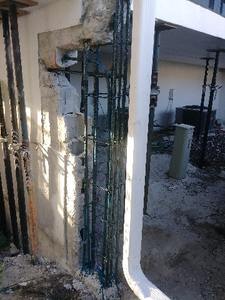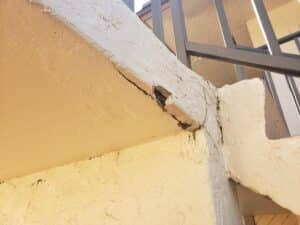Painting high rise buildings is a challenging task that requires careful planning and execution. It’s not just about transforming a building’s appearance; it’s also about ensuring the safety of everyone involved in the project. With the right preparation, safety measures, and techniques, we can achieve beautiful and lasting results.
High rise buildings face unique challenges due to their height and exposure to weather elements. This means we need to use specialized equipment and techniques to ensure a thorough and even application of paint. Proper preparation and understanding of the building’s materials can make a significant difference in the outcome of the project.
Worker safety is paramount when dealing with high rise painting. The use of harnesses, scaffolding, and other safety gear is essential to protect the crew from accidents. Adhering to safety regulations and guidelines helps create a secure environment for everyone. In this article, we’ll explore the steps for preparing for high rise painting, ensuring worker safety, best practices for the job, and tips for maintaining the painted surfaces.
Preparing for High Rise Painting Projects
Before starting a high rise painting project, thorough preparation is essential to ensure a successful outcome. One of the first steps we take is assessing the building’s condition. This involves inspecting the exterior walls for any damage, such as cracks, chips, or areas where the paint is peeling. Identifying these issues early allows us to make necessary repairs before applying a new coat of paint.
Weather conditions play a crucial role in high rise painting. We need to choose a time of year when the weather is stable and unlikely to interfere with the project. Avoiding periods of heavy rain, strong winds, or extreme temperatures helps ensure the paint adheres properly and dries evenly. Additionally, we select the right type of paint suited for high rise buildings, which is usually durable and weather-resistant.
Obtaining the necessary permits and approvals is another important step. High rise painting often involves working in public spaces or near other properties, so we must comply with local regulations and obtain permission from building management or local authorities. This ensures the project proceeds smoothly and avoids any legal complications.
Ensuring Worker Safety During High Rise Painting
Safety is paramount when painting high rise buildings. Ensuring worker safety involves multiple measures that minimize the risk of accidents and injuries. One of the first steps in safeguarding our crew is providing proper training. All workers must be trained in using safety equipment, such as harnesses and scaffolding. They also need to understand fall protection procedures and emergency response plans.
We use high-quality safety gear to protect our workers. This includes harnesses, helmets, gloves, and non-slip footwear. Harnesses are essential for preventing falls, and they must be checked regularly to ensure they are in good condition. Scaffolding is another critical component; it must be sturdy, securely anchored, and inspected daily for stability.
Communication is key to maintaining a safe work environment. Crew members should have reliable communication tools, such as radios, to stay in contact while working at heights. This allows them to alert each other to potential hazards or call for help in case of an emergency.
Additionally, we follow strict safety protocols, including setting up barriers and warning signs around the work area to keep unauthorized personnel away. By implementing these safety precautions, we can create a secure environment for our workers while they complete the high rise painting project.
Best Practices for Painting High Rise Buildings
Applying paint to high rise buildings requires specific best practices to ensure a quality finish that lasts. One of the primary practices we follow is properly preparing the surface. This step involves cleaning the building’s exterior to remove dirt, grime, and old paint. Pressure washing is often used to accomplish this, ensuring a clean surface for the new paint to adhere to.
Choosing the right type of paint is crucial. We select paints that are specifically designed for high rise buildings, which are typically more durable and resistant to weather conditions. High-quality paints can withstand the elements better and maintain their appearance longer, reducing the need for frequent repaints.
Another best practice is to use the right equipment for the job. For high rise buildings, this includes lifts, scaffolding, and specialized brushes or rollers. Sprayers may also be employed for an even application, especially in hard-to-reach areas. Each piece of equipment helps us apply the paint more efficiently and effectively.
Timing is important as well. We aim to paint during times when the weather is favorable, avoiding days with high humidity, strong winds, or rain. This ensures that the paint dries correctly and bonds well to the building’s surface. By adhering to these best practices, we can achieve a high-quality paint job that enhances the building’s appearance and longevity.
Maintaining Painted Surfaces of High Rise Buildings
Once the painting project is complete, regular maintenance is key to keeping the high rise building looking its best. One of the most important maintenance tasks is regular inspections. By routinely checking the building’s exterior, we can identify and address any issues like peeling paint, cracks, or mold growth before they become larger problems.
Cleaning the exterior surfaces helps maintain the paint’s appearance and extends its life. Depending on the location and exposure to elements, buildings may need to be cleaned yearly or biannually. Gentle cleaning methods, such as low-pressure washing, can remove dirt and pollutants without damaging the paint.
Another crucial aspect of maintenance involves addressing minor repairs promptly. If we notice any areas where the paint is chipping or peeling, we touch them up immediately. This prevents further deterioration and maintains the building’s overall look.
Applying protective sealants can also enhance the durability of the paint job. Sealants provide an additional layer of protection against moisture, UV rays, and other environmental factors. They help in preserving the paint’s color and adhesion, making the surfaces easier to clean.
By implementing these maintenance practices, we can keep high rise buildings in excellent condition, ensuring they remain visually appealing and structurally sound for years to come.
Conclusion
Painting high rise buildings is a complex task that requires careful planning, safety measures, and expert techniques. From initial preparations and ensuring the safety of our workers to following best practices and maintaining the painted surfaces, every step plays a crucial role in achieving successful results. Proper preparation and choosing the right materials help ensure a durable and attractive finish. Adhering to strict safety protocols protects our crew, while following best practices guarantees a quality outcome. Regular maintenance, such as inspections and cleanings, ensures the painted surfaces remain in pristine condition over time.
To ensure that your high rise painting project is handled professionally and safely, reach out to McLeod’s Contracting Solutions. Our experienced team is ready to provide top-notch commercial painting services and keep your buildings looking their best. Contact McLeod’s Contracting Solutions today to get started.







